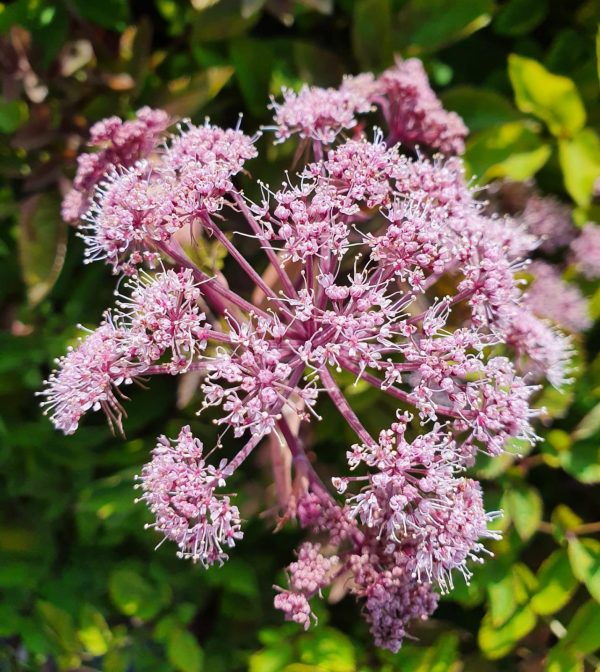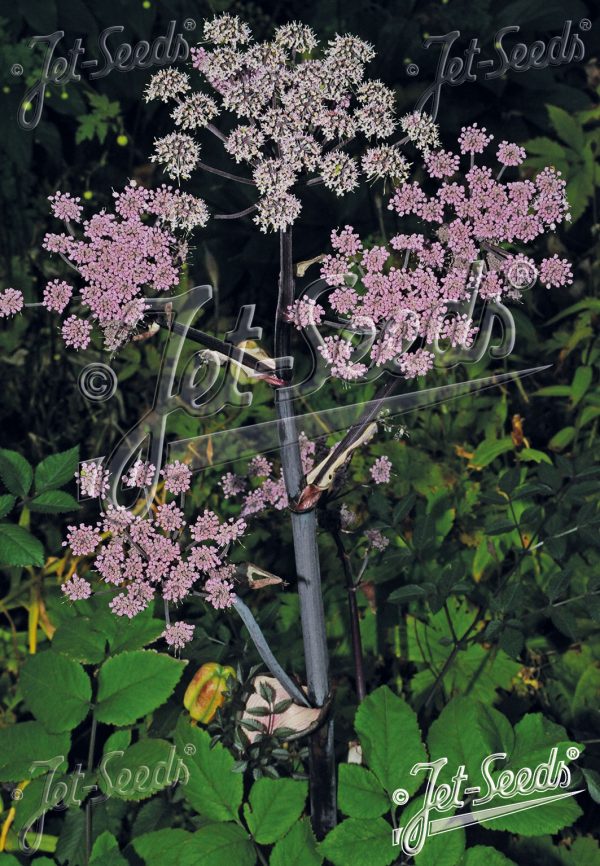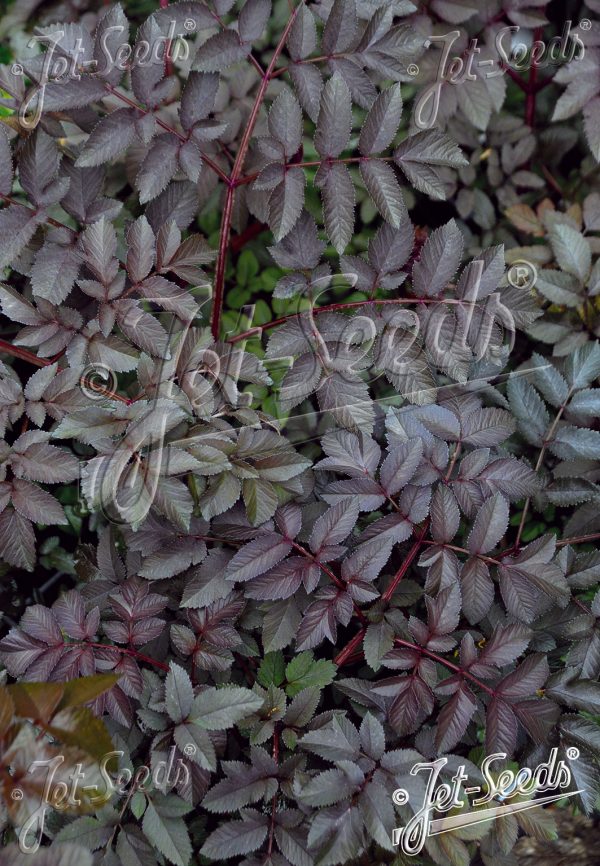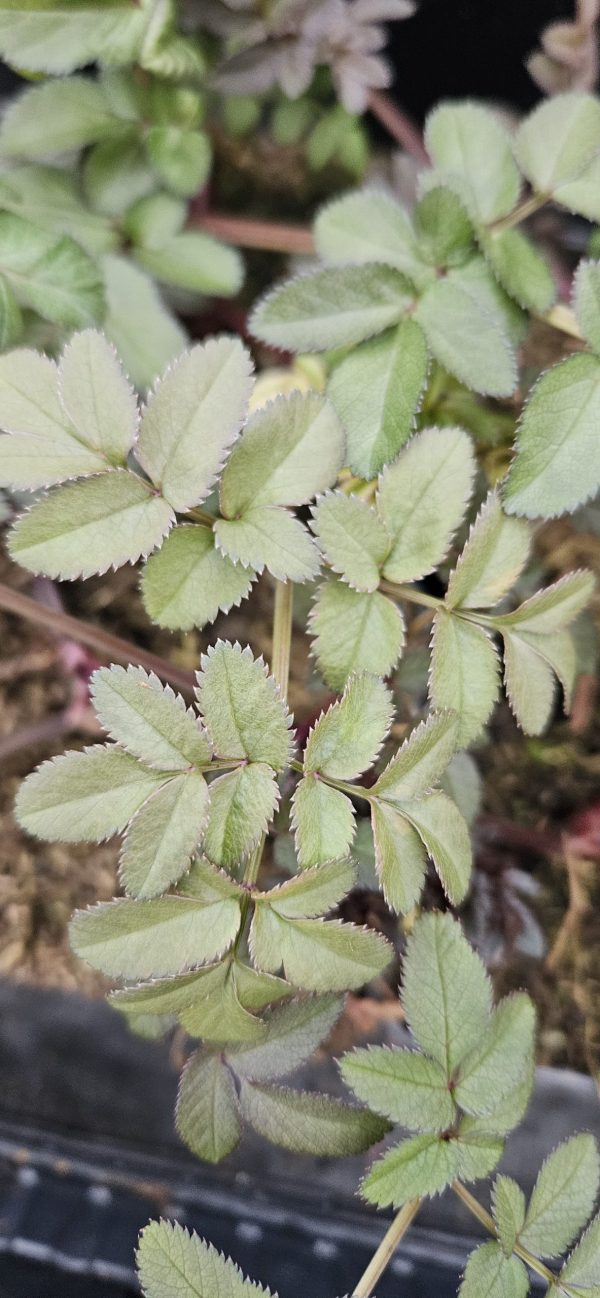Angelica sylvestris ‘Vicar’s Mead’
£6.45
This striking biennial produces dramatic, deep purple stems and leaves. It bears large umbels of soft pink flowers. It likes to be grown in well-drained soil in sun to partial shade. Flowers from August to September. Height 1.5m. Spread 80cm. Self seeds.
Description
Angelica sylvestris ‘Vicar’s Mead’ is a striking biennial that adds drama to any garden with its deep purple stems, large pink flowers, and tall stature. Follow this comprehensive planting guide to ensure that your Angelica sylvestris ‘Vicar’s Mead’ thrives, offering beautiful umbels of pink flowers from August to September.
PLANTING and AFTERCARE GUIDE
Best Planting Time
- Spring: The ideal time to plant Angelica sylvestris ‘Vicar’s Mead’ is in early spring. This allows the plant’s roots to establish before the growing season, ensuring it is well-prepared to flower in late summer.
- Autumn: Alternatively, you can plant in early autumn. Planting in autumn gives the roots time to settle before the colder months, allowing the plant to spring into action as the warmer weather returns.
Site Selection
- Sunlight: Angelica sylvestris ‘Vicar’s Mead’ grows best in full sun to partial shade. Choose a spot that receives at least 4–6 hours of direct sunlight per day to ensure robust growth and vibrant flower production. While it can tolerate some shade, it will produce the best results in a sunnier location.
- Soil: Ensure well-drained, fertile soil for your Angelica sylvestris ‘Vicar’s Mead’. The plant does not tolerate waterlogged conditions, so it’s crucial to provide good drainage. Enrich the soil with organic matter, such as compost, to improve both fertility and drainage, which will support the plant’s health and development.
Planting Instructions
- Prepare the Hole: When planting, dig a hole that is about twice the width and the same depth as the root ball of your Angelica sylvestris ‘Vicar’s Mead’. This gives the roots ample space to spread and establish themselves.
- Soil Preparation: Mix organic matter such as compost into the soil to enhance its fertility and drainage. Angelica sylvestris ‘Vicar’s Mead’ thrives in nutrient-rich soil, so preparing the ground will encourage healthy growth.
- Planting: Place the plant in the hole, ensuring the top of the root ball is level with the surrounding soil. Gently backfill the hole with the prepared soil, firming it down to eliminate any air pockets.
- Watering After Planting: Water the plant well after planting to settle the soil around the roots. Ensure the soil drains well to avoid waterlogging, which can cause root rot.
Watering Requirements
- Growing Season: Angelica sylvestris ‘Vicar’s Mead’ prefers consistently moist soil during its growing season. Water the plant regularly, ensuring the soil stays moist but not soggy. Allow the soil to dry slightly between waterings to avoid waterlogged conditions.
- Dormant Season: During the dormant period, reduce watering. Water only if the soil becomes excessively dry, as the plant needs minimal moisture while it is not actively growing.
Feeding
- Spring: In early spring, apply a balanced, slow-release fertiliser to encourage strong growth. This will provide the necessary nutrients for Angelica sylvestris ‘Vicar’s Mead’ to develop its deep purple stems and healthy foliage.
- Mid-Summer: A light feeding in mid-summer can help support continued growth and flowering, ensuring that your Angelica sylvestris ‘Vicar’s Mead’ produces its characteristic pink flowers in late summer.
Pruning
- Deadheading: To prolong the flowering period, remove spent flower heads regularly. Deadheading encourages the plant to focus its energy on new blooms, keeping it tidy and promoting fresh flower growth.
- Autumn Pruning: Once the flowering period ends, cut back the plant to the ground to prepare for dormancy. This helps prevent the plant from wasting energy on old foliage and ensures it is ready for fresh growth when spring arrives.
Mulching
- Spring: Apply a layer of organic mulch around the base of Angelica sylvestris ‘Vicar’s Mead’ in spring to retain soil moisture, suppress weeds, and regulate soil temperature. Materials like bark chips or compost are ideal for mulch.
- Winter: In colder months, a layer of mulch around the plant can help protect the roots from freezing. Be cautious not to mound the mulch directly around the crown, as this can encourage rot.
Supporting the Plant
- Staking: Angelica sylvestris ‘Vicar’s Mead’ can grow quite tall, reaching heights of 1.5 meters, and may require staking to prevent the flower stems from bending under their weight. Use sturdy supports to keep the plant upright, especially during windy conditions.
Final Tips
Angelica sylvestris ‘Vicar’s Mead’ is a magnificent biennial that produces dramatic flowers and striking purple foliage. By following this care guide, including regular watering, feeding, and pruning, your Angelica sylvestris ‘Vicar’s Mead’ will reward you with its stunning pink flower umbels from August to September. Incorporate this impressive plant into your garden to enjoy its bold beauty and the added benefit of attracting pollinators. The self-seeding nature of Angelica means you can enjoy its beauty year after year with minimal effort.
See more Angelica from Proctors Nursery
Additional information
| Pot Size | |
|---|---|
| Plant Botanical Type | Biennial |
| Flower Colour | Purple, Pink |
| Leaf Colour | Purple, Black |
| Varigated Leaf | No |
| Scent | Yes |
| Height | 1.5m |
| Spread | 0.8m |
| Blooms/foliage interest in | Summer |
| Evergreen | No |
| Hardiness | mild winter to – 5C |
| Container | Borders and Containers |
| Sun/shade | Partial Shade |
| Soil Type | Loam (normal) |
| Soil PH | Neutral |
| Drainage | Moist Soil |
| Hazerdous | No |
| Insect Attraction | Bees |











Anonymous (verified owner) –
Looks healthy and strong
Yvonne A. (verified owner) –
Geoff W. (verified owner) –
Good strong plants.